
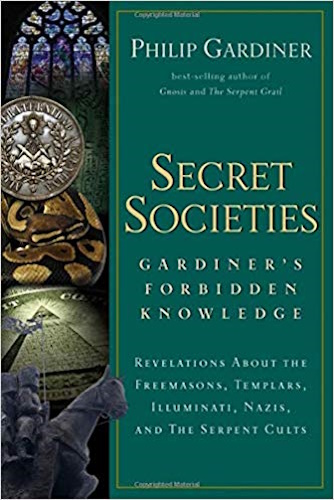



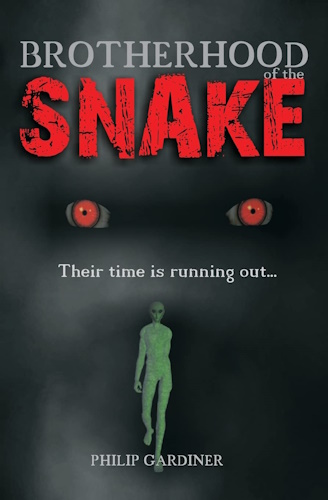



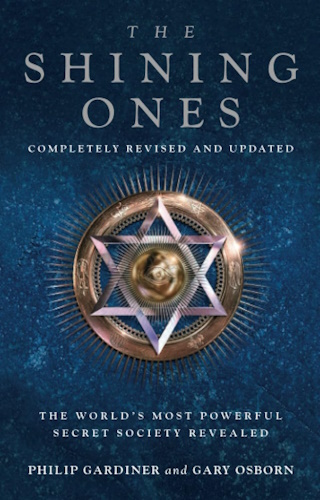

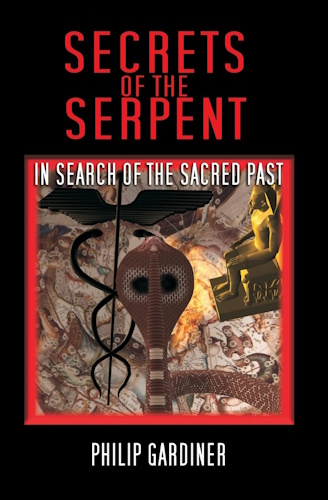

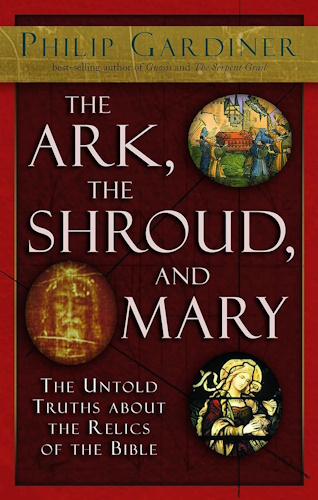


Secret Societies:
Gardiner's Forbidden Knowledge
Revelations About the Freemasons,
Templars, Illuminati, Nazis,
and the Serpent Cults
by
Philip Gardiner
2007
from IndyBay Website
![]()
![]()
7 - The Secret History of King Arthur and Robin Hood
King Arthur
In the last few chapters, we have often come across King Arthur and tales of the Grail.
What we have to understand is that these tales hide secrets. These hidden depths were placed there by various secret organizations that were too afraid to place the truth openly before the public for fear of Catholic inquisitions and Christian intolerance. In the search for the truth about the secrets of secret societies, we need to understand what they were trying to tell us and what links these tales might have to the history and lineage of secret societies.
We have already learned that religion and the Ophite, or serpent worship of wisdom, are at the core of the world's secret societies. Will we discover the same in the tales of Arthur and his literary-related character of Robin Hood?
Most historians place the Arthurian period in the 5th century A.D., and so this is where I began my historical journey to find the "real Arthur" and the real "truth."
In about A.D. 402, Stilicho, the Vandal Regent of Rome, needed the remainder of his troops back in Rome to defend the homeland against the invading Goths. This left Britain militarily vulnerable and weak, and by 410 the Anglo-Saxons were mounting a terrible invasion that set the countryside alight. But why did the Saxons delay their invasion?
The answer lies within the extremely clever way the Romans had previously cleared the country of what they called "arbarians" - that is, those people who would have either utilized inside intelligence to assist any invading force, or who would have undermined the existing rule. The Romans were using secret service methods of infiltrating and undermining the existing power base.
Britain was near to death until Stilicho arrived, and that with the Saxons defeated, the seas were safer and the Picts were broken, thereby making Britain secure.
So wrote the early Christian poet and historian, Claudian, in A.D. 399. Even the Welsh monk Gildas (c.504–570) described how,
"the legions came into close contact with the cruel enemies and slew great numbers of them. All of them were driven beyond the borders and the humiliated natives rescued from the bloody savagery which awaited them."
For eight years, between the Romans leaving and the Saxons invading, it appears that Britain enjoyed a brief time of relative peace.
This peace was shattered violently as the Saxons instigated their bloody onslaught in the summer of 410. By winter, the British "civitates" had simply had enough of their Roman pretender, Constantine III, and the old Roman system, and so they decided to go it alone.
However, the British message to the Emperor Honorius left open a small inroad, just in case they were making a mistake. Britain wanted to stay in the Roman Empire, not as subjects, but as allies aiding each other with trade and defense. So Britain became an autonomous state within the Empire, especially after the sacking of Rome by Alaric's Goths in 410.
This balance of power continued, and in A.D. 417 the units of Comes Brittaniarum partially reoccupied the Saxon forts along the southeast coast.
This British force comprised six units of cavalry and three of infantry, a unique mobile field army whose method of fighting was influenced by the Scythian warrior-élite who had been brought to Britain by the Romans. These Scythians also brought many of the serpent-related traditions we have found associated with Arthur - including the worship of Uther/Zeus and the plunging of the blood-soaked sword into and out of the ground as an offering.
Following the death of Honorius, Rome suffered badly at the hands of usurpers, and the final remnants of the Roman army vanished from Britain. The exact date of their departure is not known, although Nennius, the 8th century Christian historian, tells us that Vortigern had become king of Britain by A.D. 425. This probably referred to the southern regions and those parts of Britain previously held by the Romans. Vortigern, it seems, filled the gaping hole that Rome left behind.
Whether there is any truth in it or not, the Historia Brittonium states that it was Vortigern who invited Hengist and Horsa, the Norse warriors, to settle in Kent, only to later argue and fight against them. The old system of Roman rule finally began to crumble.
Vortigern's answer was to invite yet more foreigners to settle in the country, creating for them settlements called foederati. Was this wise council on Vortigern's part?
It may just have been his only answer, and a Roman answer at that, for the Romans had utilized this settlement procedure themselves. The Romans had also been powerful enough to keep these settlements under control, and had more incentives to offer them in exchange for their loyalty, whereas Vortigern had no other choice.
Word had reached him that the Picts and Scots were massing on the borders, and he simply did not have the power to repel them. His tactic was Roman: bring in other Barbarians and get them to fight each other - a classic Roman and later secret service tactic. It seems, however, that rather than settling warrior Barbarians on his coastlines in order to protect Britain, Vortigern opened the floodgates to the land-hungry Saxons.
Vortigern was defeated by Hengist in 455, the lowlands were put to the fire, and the Britons fled the country, heading for Spain and Armorica. The economy collapsed, and by 461 Vortigern the Great was dead.
There was a recovery of British fortunes a decade or so later, when Ambrosius Aurelianus (thought to be the son of a Roman consul) fought against the Saxons. On Marlborough Downs in Wiltshire there is a huge earthwork built by a British chieftain between 2900–2500 B.C., and later used by the Romans and Saxons. Archaeological evidence of battles from this period on this reused fort clearly shows that the Saxons were being repulsed.
It was then the turn of Arthur, who upheld the pride of the British nation through various documented battles. Many historians state that the true Arthur is elusive in the texts of the time, but there are hundreds of Welsh texts that refer to Arthur, which have not yet been translated into English. Not being a Welsh scholar, I, unfortunately, have to leave this task to them, but we should remember that there is more yet to learn.
This history of the 5th century Britons is interesting, but only partially of interest in our search for the secrets' depths. The Romans had brought the Scythians to Britain, and the Scythians brought along their cultural belief systems. They fought well, and in all probability, aided the Britons with training in their warrior ways.
The memory of these cultural additions seeped into the British consciousness and became British, Celtic, and eventually "New Age." This very real struggle for power and for the defense of the realm was an ideal backdrop to the mystery that is now called the "Arthurian cycle."
There probably was an Ambrosius, an Arthur, and a Vortigern, and they doubtless fought great battles and overcame terrible troubles. But would they have understood the idea of the Grail as the "serpent people" would have understood it? I doubt it.
Of course, they would have been familiar with stories of a legendary "magical substance" that could help soldiers recover, heal battle wounds, and "resurrect" them in great numbers. This understanding would have come from what they had picked up from the myths that had been encoded with the wisdom of the shamanic "serpent people," otherwise known as the Shining Ones.
This magical substance was "mixed" in the sacred mixing bowl, and Britain in the 5th century was itself a great and wondrous "mixing bowl."
Cultures from across the known world traveled to it. Exports of British copper, lead, tin, and much more were shipped across Europe and the Mediterranean. There is even evidence that the ancient Egyptians visited her shores and that a Pharaoh's daughter may well have settled in Ireland.
Folklore tradition also tells us that Joseph of Arimathea visited these shores, and owned tin mines in Cornwall - although this I seriously doubt. If traditions such as these are far from truth, I had to ask myself, then why were these strange tales invented?
If, as it seems, Britain was an important place, or even just as important as, say, Gaul, then why could Britain not also be the new home to the secret of the Grail? As I have shown in the Serpent Grail, the Grail on the "first level" or venom, is not place-specific.
It is a secret held by all the civilizations of the globe, called many things, but essentially the same substance.
Robin Hood
Etymologically, Robin comes from the Norman "Robert," a form of the Germanic Hrodebert, and it originally meant "famous" or "bright" - possibly "shining."
Robin Hood is therefore the "Bright Hood," a similar name to the Naga with their illuminated serpent or cobra hoods. As many have previously stated there are strong links between the origin of Robin Hood and the Green Man, who is also the ancient Egyptian god Osiris and the Greek-Roman god Dionysus/Bacchus, and so we should hope to find something of interest in the many stories surrounding this enigmatic character.
It's no surprise to also discover that the Templars are very much associated with Robin, and many of the tales of Robin also match in format those of King Arthur.
In the popular retelling by Henry Gilbert (Robin Hood, 1912) we find mention of a pig-like serpent.
Robin wants to know who the hermit of Fountains Dale is and how the one named as "Peter the Doctor" managed to cure people:
"Oh," said Nick with a smile, "I meant no ill-will to Peter. Often hath his pills cured our villeins when they ate too much pork, and my mother - rest her soul - said that naught under the sun was like his lectuary of Saint Evremond."
Peter the Doctor speaks,
"I deserve well of all my patients, but" - and his eyes flashed - "that great swinehead oaf of a hermit monk - Tuck by name, and would that I could tuck him in the deepest, darkest hole in Windleswisp marsh! - That great ox-brained beguiled me into telling him of all my good specifics.
With his eyes as wide and soft as a cow's he looked as innocent as a mawkin, and asked me this and that about the cures which I had made, and ever he seemed the more to marvel and to gape at my wisdom and my power.
The porcine serpent! He did but spin his web the closer about me to my own undoing and destruction. When I had told him all, and was hopeful that he would buy a phial of serpent's oil of Jasper - a sure and certain specific, my good freemen, against ague and stiffness."
So, Friar Tuck is like a snake-pig and Peter the Doctor hopes to sell him "serpent oil." It is likely that Gilbert used the "serpent oil" in the early 19th century, as this peculiar substance was quite fashionable at the time, and no matter how hard I searched I could not find Gilbert's source material.
There are elements of the Robin Hood myth that relate to other legends. The "Tree of Life" is seen as "Robin's Larder Tree," supplying all that could be required, similar to the "Horn of Plenty" or the "cauldron" of Celtic folklore.
Robin's link with the Horned God is also telling, as he is lord and master over the human "animals" of the Forest and they are guardians of their stolen treasure, similar to the hoarding, serpent Nagas of Hinduism. They do good deeds for those who deserve them and dastardly deeds to those who do not.
In the connected tales of Robin Goodfellow, the "trickster of the woods" also known as Puck, there is also the link of Sib, the fairy who lives in the hillside and is linked as being a "serpent spirit" of healing. Robin falls in love with his lady of the waters or Queen of Heaven, later to be known as the Maid Marion (Mer = Sea/water, Marion = Mary) and in many ways is undermining the new Christian world that forced itself upon this ancient mixture of Paganism.
Robin Hood and Robin Goodfellow are therefore secret tales of an oppressed culture, just as are the letters and gospels of the Christian cult.
Puck, incidentally, is thought to have a much older pedigree, being traced back to an Irish Pan-like deity known as Pouka. Indeed, Robin Goodfellow is said to be born of a human mother and a god-like father in the form of Oberon (king of the fairies; Ob meaning "serpent").
He is also green like the "Green Man," which is the special healing color attributed to many things surrounding the serpent cult - such as the Emerald Tablet, the color of initiation into Gnostic mysteries, associated with the Masons and the Green Glass of the Grail.
It is believed by many that the crescent shape of the bow recalls the crescent moon and horns of the Pagan "Horned God," as does the horn Robin uses to call his people together. Even Little John in the tale of "Robin Hood and Sir Guy de Gisborne" is tied to a tree, being saved at the last minute by Robin disguised as Sir Guy.
As with most folklore there is symbolism, myth, legend, and probably some element of a real origin.
Robin Hood may well have some aspects of his personality and acts from real historical figures, but most historians would steer away from stating anything as fact.
As Fran and Geoff Doel point out in their book, Robin Hood: Outlaw or Greenwood Myth,
"the origin of Robin Hood was obscure…suggests a mythological or folklore origin."
What we also find, however, in some of the earlier tales is that Robin Hood and Little John - like Jesus and John the Baptist - were equals.
In the 15th century, Walter Bower said that Robin Hood together with Little John and their companies rose to prominence. This in itself points out that both Robin and John were seen to each have their own followers very much like Jesus and John. They are therefore the "twins" of Gnosticism, like Castor and Pollux - the duality and balance.
Other elements of Robin's life and especially his death show an ancient link:
Curiously the ballad of Robin Hood's Death also has a ritualistic element, with foreknowledge and ritual ‘banning' and a death by bleeding, which is suspiciously close to the ritualistic dismemberment of other European and Asiatic Springtime gods and heroes such as Tammuz, Adonis and Osiris.
The cognitive connections between the outlaw and Robin the bird may be coincidental, but the possibilities of a Greenwood myth underlying the later outlaw traditions needs to be examined.
(Doel, Robin Hood: Outlaw or Greenwood Myth)
Tammuz, Adonis, and Osiris are vegetation gods of greenness.
Indeed Osiris himself in the Pyramid Texts at Saqqara is called the "Great Green" and often appears green-skinned as a symbol of "resurrection and life."
The battle between Osiris and Set seems all the more familiar now in the struggle that ensues between Robin and his arch-rival the Sheriff of Nottingham. Osiris becomes Horus when resurrected, and we find that it is Horus who is protected by the Wadjet snake - the green snake.
Even in the way he dies there are links with older mysteries. Robin is ritualistically bled to death like the ancient Pagan sacrifices. The deed is done by the Abbess of Kirklees, who acts as the priestess in some ancient Pagan ritual.
Could it be that the tales of Robin are more ancient than previously believed?
Could they really be tales of ancient Egypt and even Sumeria?
Passed down over millennia and altered by time?
One thing is true: These tales were written up by clerics of the Church and members of secret orders.
The Arthurian tales had influence from the white robed Cistercians and the Knights Templar - indeed it was the Templars who were protectors of the Grail itself, guardians of the secret knowledge.
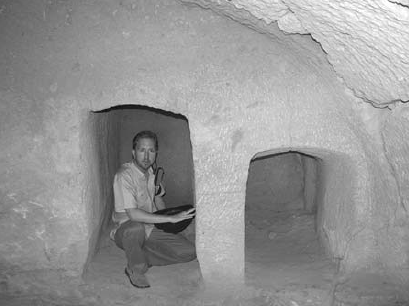
Author in Roman tombs or Gateways for the dead, Cyprus
The fact remains that Christianity was stomping all over old Pagan beliefs, rewriting tales that had existed for hundreds of years.
But, as the Christians were destroying cultural history, there were those who defended it. The Masons of the period in which Robin Hood grew to popularity were hiding their symbols and Pagan ideas in the framework and masonry of churches across Europe. Green Men sprang up in every sacred Christian place. Strange characters seen hiding in foliage peeped out like messengers from the past.
Grails, beheaded victims, pillars of foliage, and images of serpents were placed everywhere and often at the behest of the same Cistercians and Templars - not to mention the myriad other orders and groups that were maintaining the hidden Gnosis which was to emerge in later times within the ranks of the so-called modern secret societies.
These peculiar and somewhat disturbing images are none other than the characters from the Pagan past - gods and deities such as Herne the Horned God and many other images of Mother Goddesses.
The truth to the past of man's religious upbringing can still be seen in the stonework of Christian churches and cathedrals, in places such as Rosslyn Chapel and Lichfield Cathedral. But not just in the stone.
We must also look to the legends, for as we can see, the tales of Robin Hood are not only linked to the ancient past; they are also linked inextricably to the tales of Arthur and his search for the Holy Grail with instances such as those of the knight Gawain decapitating the Green Giant, and mysterious images of a Green Knight.
It is seen clearly in the fact that the "plays" of old, enacted by local people and paraded through streets, have changed titles across time and location.
From the St. George play to the Robin Hood and Green Jack, from Wildman to Green George, the basic story is the same. These tales, as we have seen, can be traced backward across time to India and Sumeria, Egypt and Persia.
They formed the basis of secret priestly orders many thousands of years ago and they still do today.














-
Urantia Book, 44:0.11 - The Celestial Artisans
Never in your long ascendancy will you lose the power to recognize your associates of former existences. Always, as you ascend inward in the scale of life, will you retain the ability to recognize and fraternize with the fellow beings of your previous and lower levels of experience. Each new translation or resurrection will add one more group of spirit beings to your vision range without in the least depriving you of the ability to recognize your friends and fellows of former estates.
-
Princess Bride 1987 Wallace Shawn (Vizzini) and Mandy Patinkin (Inigo Montoya)
Vizzini: HE DIDN'T FALL? INCONCEIVABLE.
Inigo Montoya: You keep using that word. I do not think it means what you think it means. -
Urantia Book, 117:4.14 - The Finite God
And here is mystery: The more closely man approaches God through love, the greater the reality -- actuality -- of that man. The more man withdraws from God, the more nearly he approaches nonreality -- cessation of existence. When man consecrates his will to the doing of the Father's will, when man gives God all that he has, then does God make that man more than he is.
-
Urantia Book, 167:7.4 - The Talk About Angels
"And do you not remember that I said to you once before that, if you had your spiritual eyes anointed, you would then see the heavens opened and behold the angels of God ascending and descending? It is by the ministry of the angels that one world may be kept in touch with other worlds, for have I not repeatedly told you that I have other sheep not of this fold?"
-
Urantia Book, Foreword - 0:12.12 - The Trinities
But we know that there dwells within the human mind a fragment of God, and that there sojourns with the human soul the Spirit of Truth; and we further know that these spirit forces conspire to enable material man to grasp the reality of spiritual values and to comprehend the philosophy of universe meanings. But even more certainly we know that these spirits of the Divine Presence are able to assist man in the spiritual appropriation of all truth contributory to the enhancement of the ever-progressing reality of personal religious experience—God-consciousness.
-
Urantia Book, 1:4.3 - The Mystery Of God
When you are through down here, when your course has been run in temporary form on earth, when your trial trip in the flesh is finished, when the dust that composes the mortal tabernacle "returns to the earth whence it came"; then, it is revealed, the indwelling "Spirit shall return to God who gave it." There sojourns within each moral being of this planet a fragment of God, a part and parcel of divinity. It is not yet yours by right of possession, but it is designedly intended to be one with you if you survive the mortal existence.
-
Urantia Book, 1:4.1 - The Mystery Of God
And the greatest of all the unfathomable mysteries of God is the phenomenon of the divine indwelling of mortal minds. The manner in which the Universal Father sojourns with the creatures of time is the most profound of all universe mysteries; the divine presence in the mind of man is the mystery of mysteries.
-
Urantia Book, 1:4.6 - The Mystery Of God
To every spirit being and to every mortal creature in every sphere and on every world of the universe of universes, the Universal Father reveals all of his gracious and divine self that can be discerned or comprehended by such spirit beings and by such mortal creatures. God is no respecter of persons, either spiritual or material. The divine presence which any child of the universe enjoys at any given moment is limited only by the capacity of such a creature to receive and to discern the spirit actualities of the supermaterial world.
-
Urantia Book, 11:0.1 - The Eternal Isle Of Paradise
Paradise is the eternal center of the universe of universes and the abiding place of the Universal Father, the Eternal Son, the Infinite Spirit, and their divine co-ordinates and associates. This central Isle is the most gigantic organized body of cosmic reality in all the master universe. Paradise is a material sphere as well as a spiritual abode. All of the intelligent creation of the Universal Father is domiciled on material abodes; hence must the absolute controlling center also be material, literal. And again it should be reiterated that spirit things and spiritual beings are real.
-
Urantia Book, 50:6.4 - Planetary Culture
Culture presupposes quality of mind; culture cannot be enhanced unless mind is elevated. Superior intellect will seek a noble culture and find some way to attain such a goal. Inferior minds will spurn the highest culture even when presented to them ready-made.
-
Urantia Book, 54:1.6 - True And False Liberty
True liberty is the associate of genuine self-respect; false liberty is the consort of self-admiration. True liberty is the fruit of self-control; false liberty, the assumption of self-assertion. Self-control leads to altruistic service; self-admiration tends towards the exploitation of others for the selfish aggrandizement of such a mistaken individual as is willing to sacrifice righteous attainment for the sake of possessing unjust power over his fellow beings.
-
Urantia Book, 54:1.9 - True And False Liberty
How dare the self-willed creature encroach upon the rights of his fellows in the name of personal liberty when the Supreme Rulers of the universe stand back in merciful respect for these prerogatives of will and potentials of personality! No being, in the exercise of his supposed personal liberty, has a right to deprive any other being of those privileges of existence conferred by the Creators and duly respected by all their loyal associates, subordinates, and subjects.
-
Urantia Book, 54:1.8 - True And False Liberty
There is no error greater than that species of self-deception which leads intelligent beings to crave the exercise of power over other beings for the purpose of depriving these persons of their natural liberties. The golden rule of human fairness cries out against all such fraud, unfairness, selfishness, and unrighteousness.




